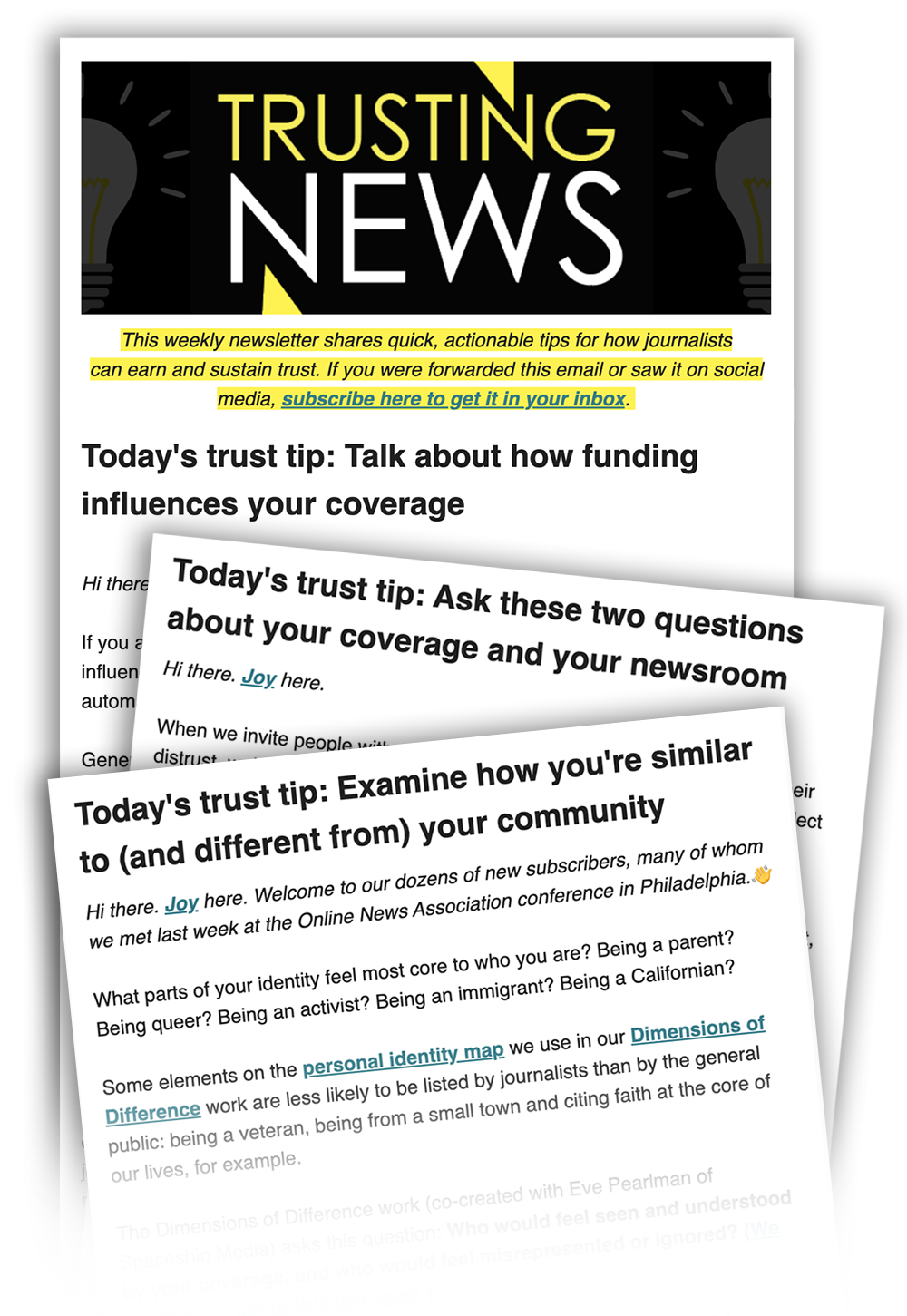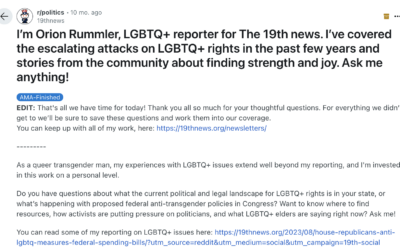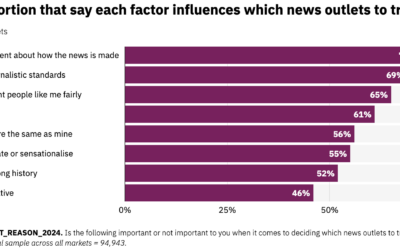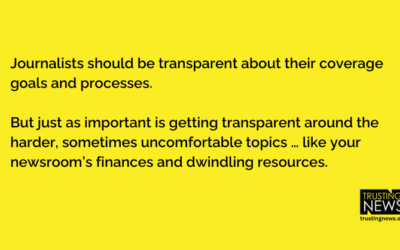Subscribe to Trust Tips
Our Trust Tips newsletter provides one actionable tip for earning trust each Tuesday.
Below you’ll find some highlights from our newsletter archives. For more, see a list of our latest newsletter editions or browse our entire newsletter archive.
Start here, with these newsletter editions:
- Make listening part of your newsroom routine
- Quit asking for “feedback” and “story ideas”
- How to inject transparency into daily coverage
- Explain what you do — and don’t — cover
- If you strive for fairness, tell your audience
- Acknowledge when you mess up
And check out this recent series on news avoidance:
- Learn about news avoiders with this guide
- Tell news avoiders these things about your journalism
- Adapt your products for news avoiders in three ways
Latest newsletter editions
Journalists, talk about the lens you bring to reporting
Journalists go to great lengths to eliminate any semblance of bias. This often entails taking...
Act on on Reuters latest trust research in these 3 ways
New research from the annual Reuters Digital News Report highlights factors that influence...
Talk about your shrinking staff
Recent research released by Pew confirms that many people do not understand the financial crisis...





